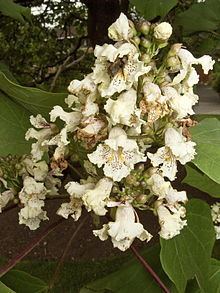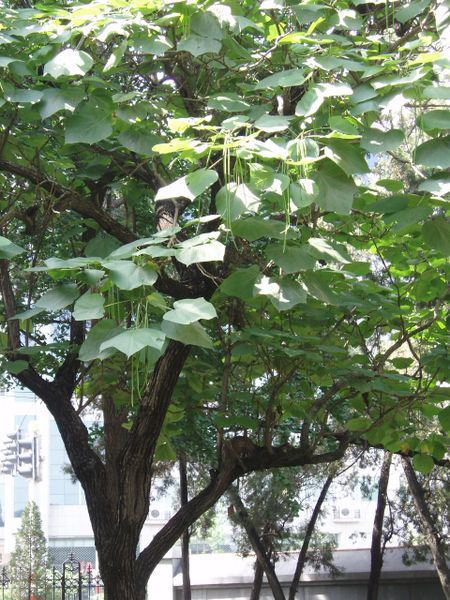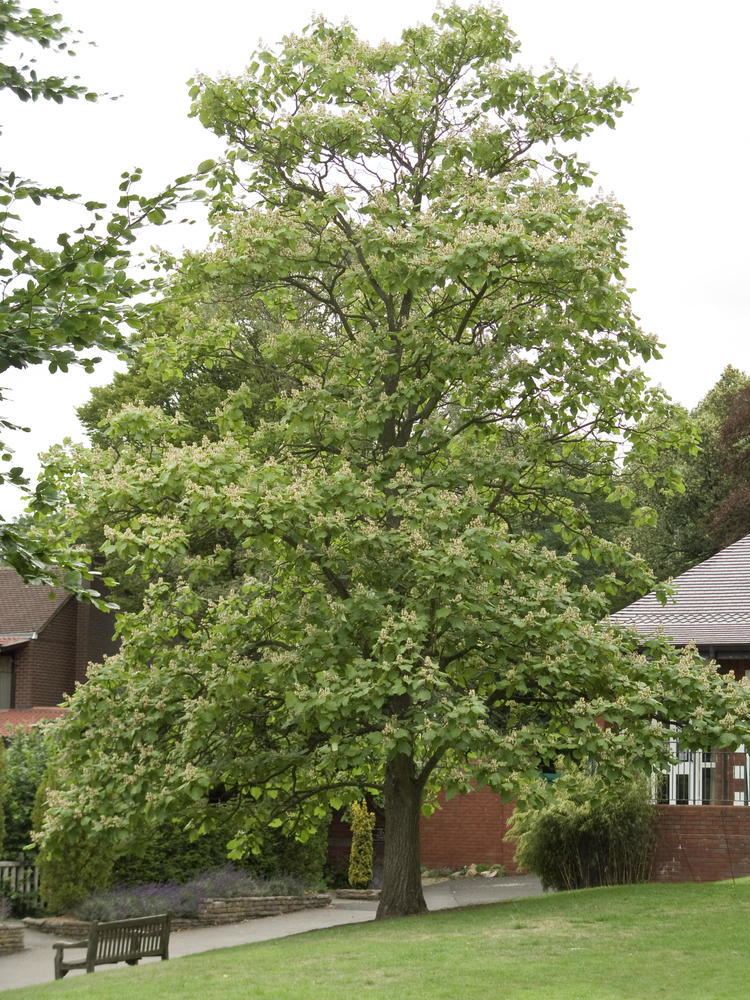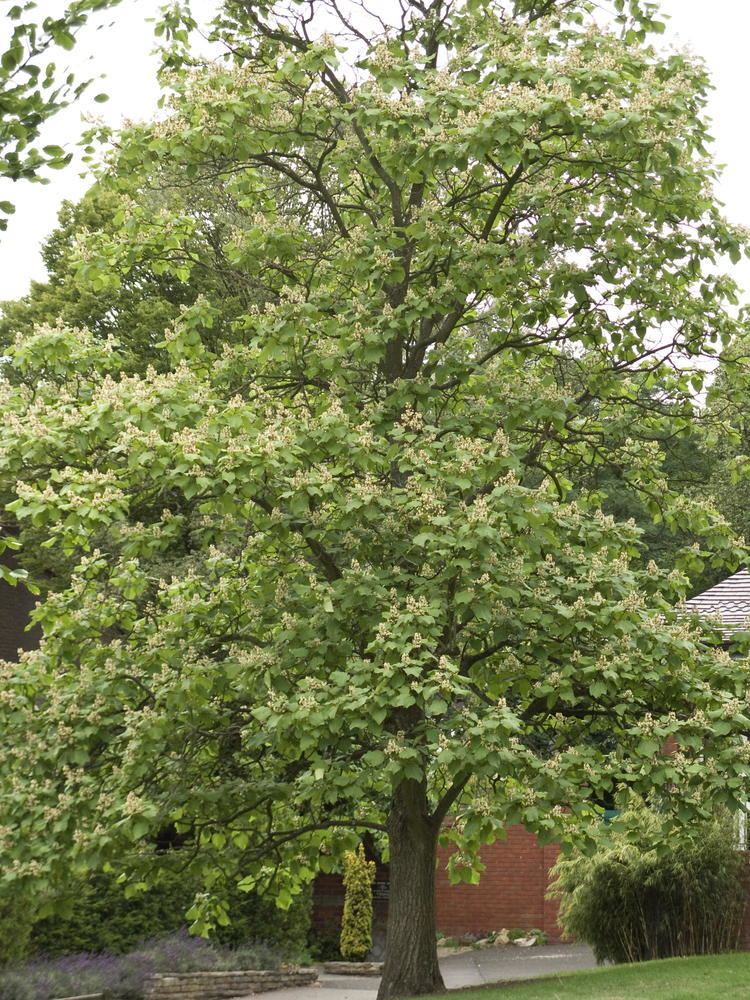Rank Species | Genus Catalpa Higher classification Catalpa | |
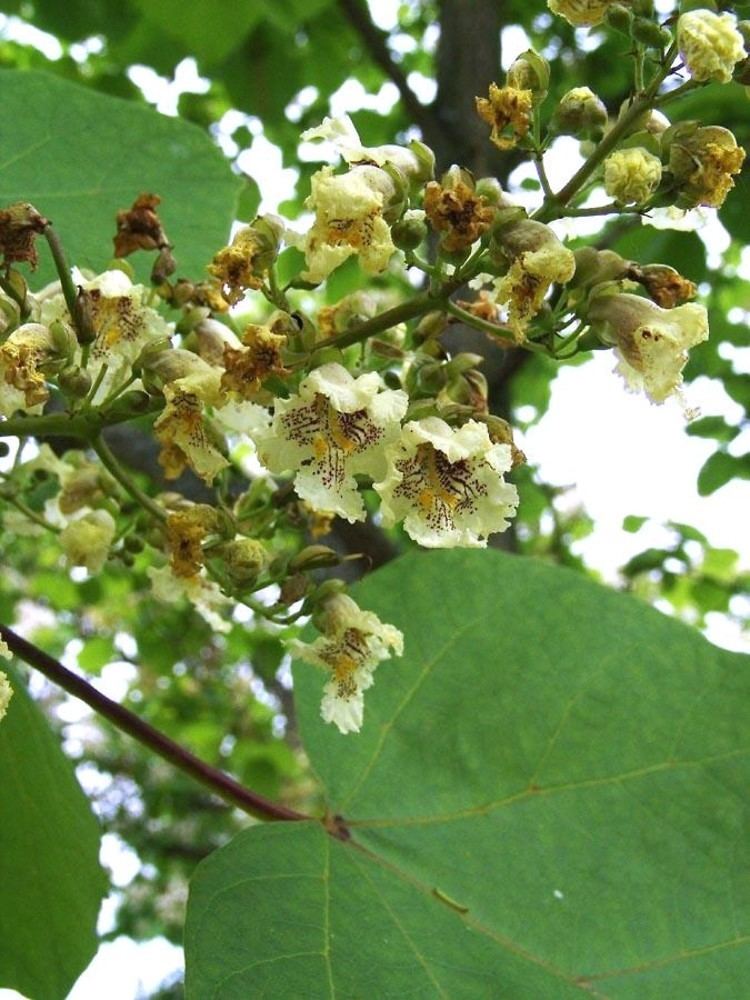 | ||
Similar Catalpa bungei, Catalpa, Bignoniaceae, Catalpa speciosa, Catalpa bignonioides | ||
Catalpa ovata
Catalpa ovata, the yellow catalpa or Chinese catalpa (Chinese: 梓; pinyin: zǐ), is a pod-bearing tree native to China. Compared to C. speciosa, it is much smaller, typically reaching heights between 20 and 30 feet. The inflorescences form 4–10-inch-long (100–250 mm) bunches of creamy white flowers with distinctly yellow tinging; individual flowers are about 1 inch wide. They bloom in July and August. The leaves are very similar in shape to those of Paulownia tomentosa, having three lobes (two are abruptly truncated on either edge, with a third, central, slightly acute, pointed lobe forming the leaf apex), and are darkly green. Fruits are very narrow, foot-long pods.
Contents
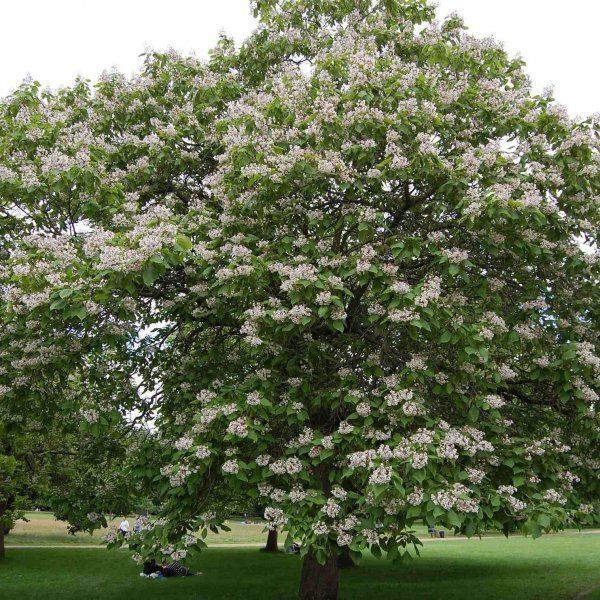
Although native to the more temperate provinces within China (Anhui, Gansu, Hebei, Heilongjiang, Henan, Hubei, Jiangsu, Jilin, Liaoning, Nei Monggol, Ningxia, Qinghai, Shaanxi, Shandong, Shanxi, Sichuan, Xinjiang), C. ovata is also cultivated in North America and Europe. It is commonly used to make the undersides of qin.
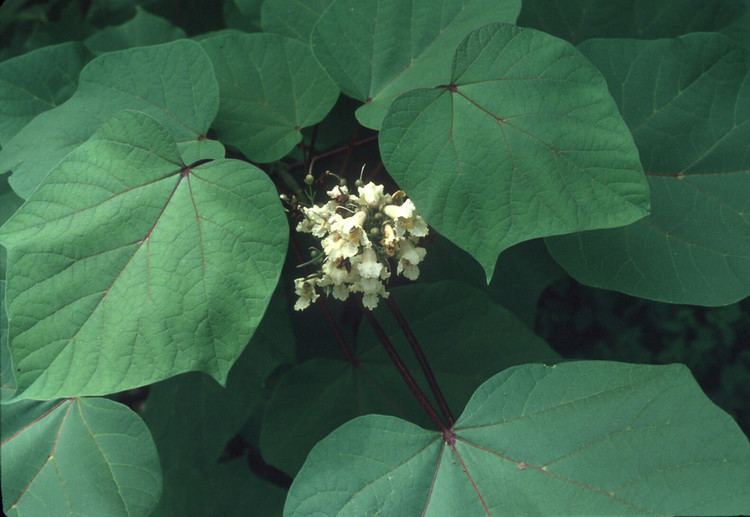
Chemistry
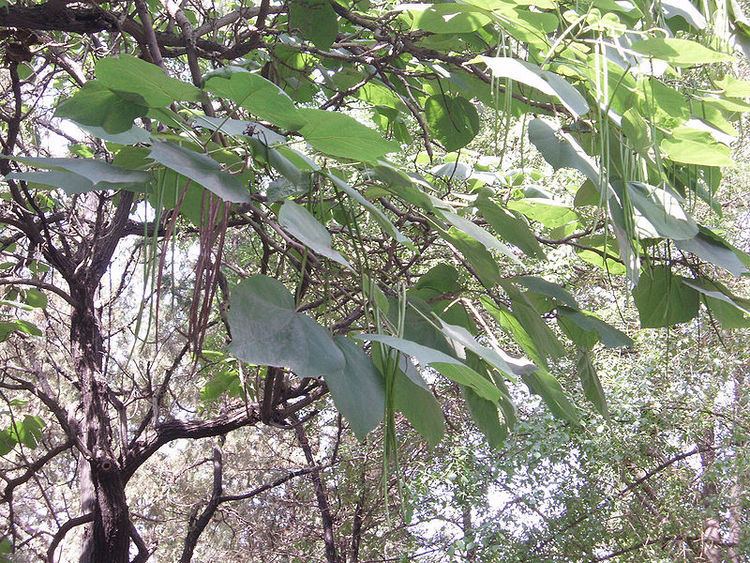
The plant contains dehydro-alpha-lapachone (DAL) which inhibits vessel regeneration, interferes with vessel anastomosis, and limits plexus formation in zebrafish. DAL also controlled the development of the fungi rice blast, tomato late blight, wheat leaf rust, barley powdery mildew and red pepper anthracnose (Colletotrichum coccodes (Wallr) S Hughes). The chemical was particularly effective in suppressing anthracnose.
Other
Referenced in the Zhuangzi.
